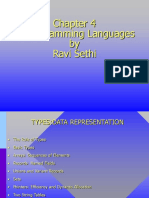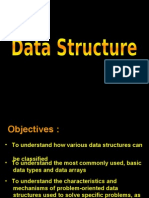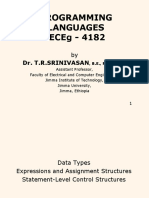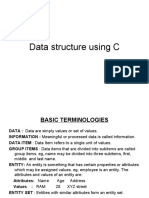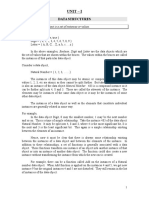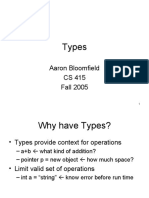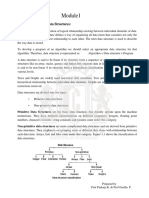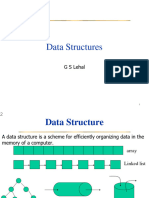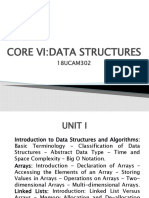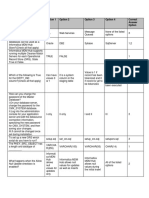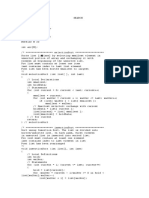0% found this document useful (0 votes)
83 views59 pagesData Structures & Types Overview
This document discusses different data types including scalar types like integers, characters, booleans, and reals. It also covers structured types like records, arrays, sets, pointers, and enumerations. Records are collections of fields of different types that can be accessed by name. Arrays are collections of homogeneous data indexed by integers where elements can be of any type. The document discusses how these types are represented in memory and common operations that can be performed on them.
Uploaded by
AbraCopyright
© © All Rights Reserved
We take content rights seriously. If you suspect this is your content, claim it here.
Available Formats
Download as PDF, TXT or read online on Scribd
0% found this document useful (0 votes)
83 views59 pagesData Structures & Types Overview
This document discusses different data types including scalar types like integers, characters, booleans, and reals. It also covers structured types like records, arrays, sets, pointers, and enumerations. Records are collections of fields of different types that can be accessed by name. Arrays are collections of homogeneous data indexed by integers where elements can be of any type. The document discusses how these types are represented in memory and common operations that can be performed on them.
Uploaded by
AbraCopyright
© © All Rights Reserved
We take content rights seriously. If you suspect this is your content, claim it here.
Available Formats
Download as PDF, TXT or read online on Scribd
/ 59

